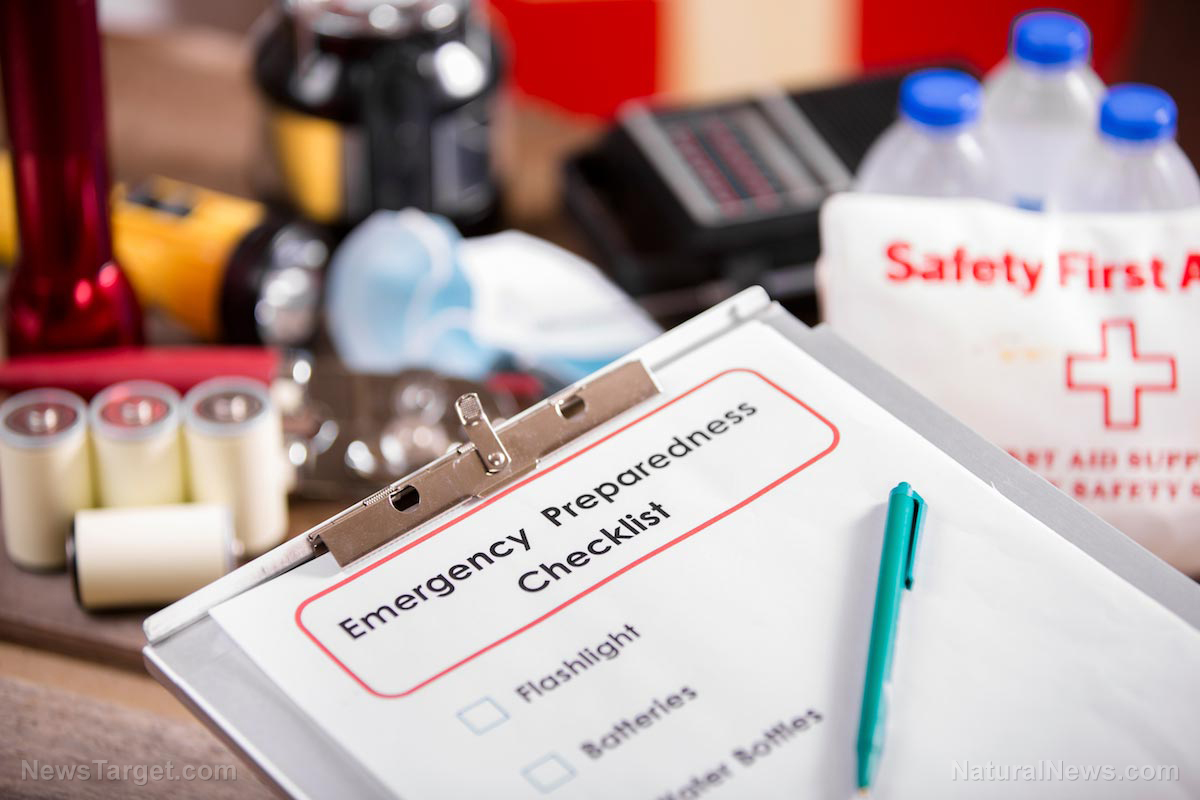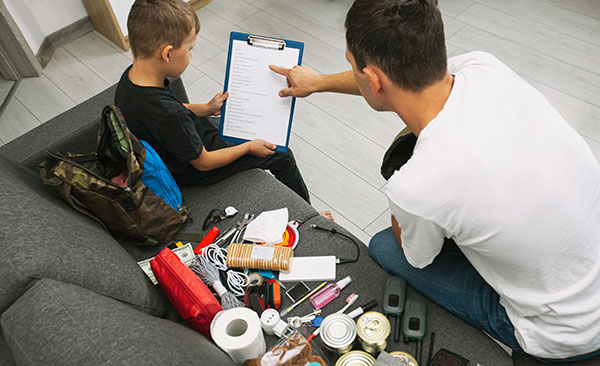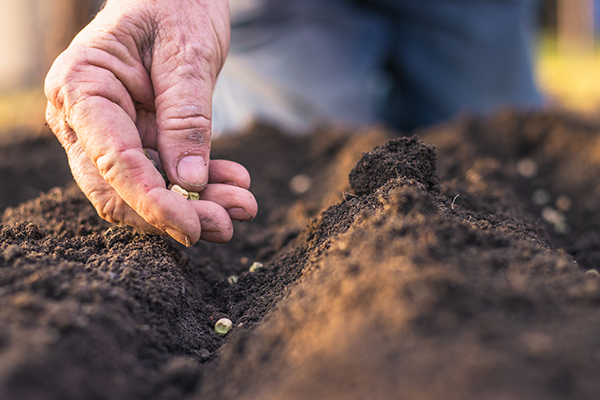Preparing for the unexpected: Tips for building an apartment emergency kit
04/23/2025 / By Zoey Sky

- Emergency preparedness is crucial for apartment dwellers as they face unique risks such as power outages, fires, earthquakes and structural damage that can disrupt utilities.
- A tailored survival kit addresses these challenges while fitting into limited space. The core essentials include water and hydration sources, non-perishable food, hygiene and sanitation supplies, warmth and shelter, and safety and tools.
- Store at least one gallon per person per day for three days. Choose calorie-dense items like canned goods (with a manual can opener), freeze-dried meals, trail mix and jerky for a three-day minimum supply.
- Include hand sanitizer, wipes, toothbrushes, feminine products and waste bags in your preparation. Sanitation becomes critical if plumbing fails.
- Keep warm clothing and gloves for power outages. Pack a flashlight, multi-tool, whistle, N95 masks, a first-aid kit (with medications) and a portable power bank/solar charger for communication during outages.
In an era marked by unpredictability, the importance of emergency preparedness cannot be overstated. While many associate emergency kits with homeowners or those living in disaster-prone areas, apartment dwellers face their own set of challenges that also necessitate careful planning.
Whether it’s a city-wide blackout, a devastating fire or a sudden earthquake, having a well-stocked emergency kit can be the difference between safety and peril.
This guide will walk you through creating a comprehensive, space-efficient emergency kit tailored specifically for apartment living. (h/t to ApartmentPrepper.com)
Why apartment dwellers need emergency kits
Emergencies are not bound by geography or dwelling type. Apartments, with their shared utilities, complex evacuation routes and reliance on infrastructure, also present unique risks.
A power outage can leave you stranded in an elevator or without heating or cooling. A fire can spread quickly, requiring swift evacuation. Water shortages or contamination can disrupt daily life, and earthquakes can cause structural damage, trapping residents.
In these scenarios, a well-prepared emergency kit is not just a precaution but a necessity. (Related: Self-sufficiency training: How to practice homesteading in an apartment or tiny home.)
Key components of an apartment emergency kit
If you’re overwhelmed with the thought of preparing emergency kits for your family, here are some tips to help you get started:
Water and hydration essentials
Water is the most critical element of any emergency kit. Aim to store at least one gallon of water per person per day for a minimum of three days.
Given the limited space in apartments, consider these space-saving solutions:
- Collapsible water containers – These can be stored flat and filled with water when needed.
- Water purification tablets – These are essential in case of contamination or shortages.
- Filtered water bottles – Filtered water bottles are compact and portable, making them ideal for both storage and evacuation.
Rotate stored water every six months to ensure freshness.
Non-perishable food supplies
Ensure you have at least a three-day supply of non-perishable food requiring no refrigeration, cooking or significant water.
Here are items that are easy to store in small spaces:
- Canned foods – Stock up on canned beans, vegetables, tuna and more. Ready to heat and serve canned soups and stews are also a great option, especially if you are worried about winter emergencies.
- Freeze-dried meals and protein bars – These items are compact and calorie-dense.
- Granola bars, dried fruits and nuts – These snacks are nutritious and long-lasting.
- Jerky and other dehydrated meats – Jerky is full of protein and comes in different flavors like beef or lamb. Even though jerky lasts long, it should be stored in a sealed, airtight container to retain freshness.
Include a manual can opener if you have canned food in your kit.
Personal hygiene items
In prolonged emergencies, maintaining basic hygiene can be challenging, especially in apartments with shared facilities.
Pack essentials such as:
- Feminine hygiene products – Essential for women’s health.
- Hand sanitizer and wipes – For sanitation when water is scarce.
- Toothbrush, toothpaste and soap – For maintaining personal cleanliness.
- Waste bags or a portable toilet kit – In case plumbing is compromised or you must bug out (evacuate) when SHTF.
Warm clothing and blankets
Many apartments rely on central heating, which can fail during power outages.
Prepare for the cold with:
- A change of clothes – Include socks and underwear so you can stay dry and comfortable.
- Extra blankets or emergency thermal blankets – These will retain body heat.
- Hats and gloves – For added warmth.
First-aid kit and medications
A well-stocked first-aid kit is crucial.
Yours should include:
- Allergy medications and inhalers – If applicable.
- Bandages, gauze and antiseptics – For treating wounds.
- Prescription medications – Essential for ongoing health conditions. Try to pack at least a week’s supply.
Don’t forget to include medical information such as a list of medications, allergies and important health conditions for your reference.
Whistle and dust masks
For certain emergencies, like fires or earthquakes, visibility can be poor and air quality compromised.
Make sure your kit also has:
- A whistle – To alert rescuers if you’re trapped.
- Dust masks (N95 or higher) – To protect your lungs from smoke, dust or debris.
Portable power bank or solar charger
Power outages can last from hours to days.
Keep your phone charged to receive emergency alerts and contact loved ones with:
- A high-capacity portable power bank – For reliable power.
- A solar charger – For prolonged outages.
Multi-purpose tools and flashlights
Basic tools and lighting are vital during emergencies, especially power outages.
Include the following items in your emergency kit:
- A multi-tool – Get a multi-tool with screwdrivers, pliers and knives that can be used for various tasks.
- A flashlight or headlamp – Preferably solar-powered or crank-operated.
- Batteries – You’ll need extra batteries for flashlights, radios and other devices.
- Duct tape and plastic sheeting – For temporary repairs or shelter.
Important documents
In an evacuation, you’ll need quick access to important documents.
Keep copies of the following documents in a waterproof, portable container:
- Emergency contacts list – Get both a digital and printed list of emergency contacts.
- Identification/IDs (passports, driver’s licenses) – For identification purposes.
- Medical records and insurance information – For healthcare access.
- Lease agreement and apartment contact details – For property management.
Cash
While digital transactions are more common these days, cash is essential during power outages or network failures. Keep a small amount in various denominations so you have money to buy more supplies when SHTF.
Customizing your emergency kit for specific apartment situations
You may need to tweak your family’s emergency kits depending on certain situations:
For studio apartments
In smaller spaces, you need to prioritize multi-functional items and utilize storage creatively. Prepare all-in-one survival kits that are compact and easy to store.
If you have under-bed or closet storage, you can use small containers to store items in unused spaces.
For families or pets
If you have children or pets, expand your kit to meet their needs:
For children
Children or babies will need baby food, diapers, toys or books.
For pets
Pets will need food, water, a portable pet carrier and any necessary medication. You should also have photocopied veterinary records, such as a medical summary of prescriptions for medications.
Pet documents should include photocopies of registration information, such as proof of ownership or adoption records. Include recent photographs of your pet and a detailed pet description, with information such as breed, sex, color and weight.
For high-rise residents
If you live in a high-rise, plan for extended evacuation times or the possibility of being trapped on higher floors.
You will need stair-climbing equipment, such as a lightweight evacuation chair, if you have family members who are mobility-impaired.
You will also need extra food and water, so store more than a three-day supply if possible.
Living in an apartment doesn’t exempt you from being ready for emergencies. By assembling a kit tailored to your lifestyle, you can ensure that you and your family are ready for the unexpected.
Visit Preparedness.news for more tips to help you get ready before SHTF. You can also visit Health Ranger Store and Brighteon Store to find different prepping supplies for your stockpile.
Watch this clip about Freeze-Dried Snacks and why they’re a great addition to your emergency kits.
This video is from the Health Ranger Store channel on Brighteon.com.
More related stories:
5 Essential urban prepping tips.
Must-have items for your heatwave emergency kit.
Prepping 101: Tips to help you start your prepping journey.
Learning self-reliance: A survivalist’s guide to prepping alone.
Sources include:
Submit a correction >>
Tagged Under:
apartment prepping, Collapse, disaster, emergency kit, Gear, preparedness, prepper, prepping, SHTF, survival, survival gear, Survival Tips, urban prepping
This article may contain statements that reflect the opinion of the author
RECENT NEWS & ARTICLES
COPYRIGHT © 2017 FOOD SUPPLY NEWS




















